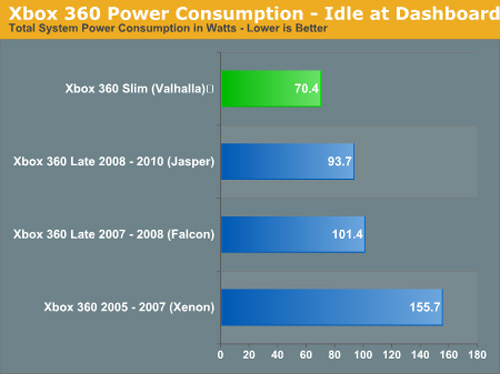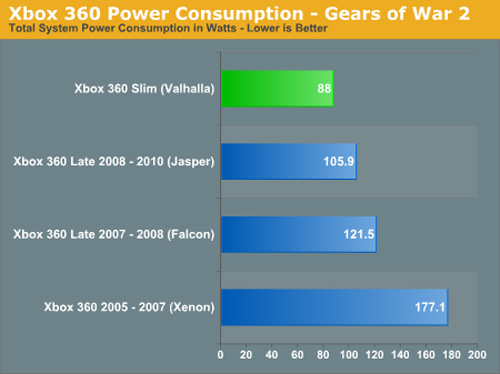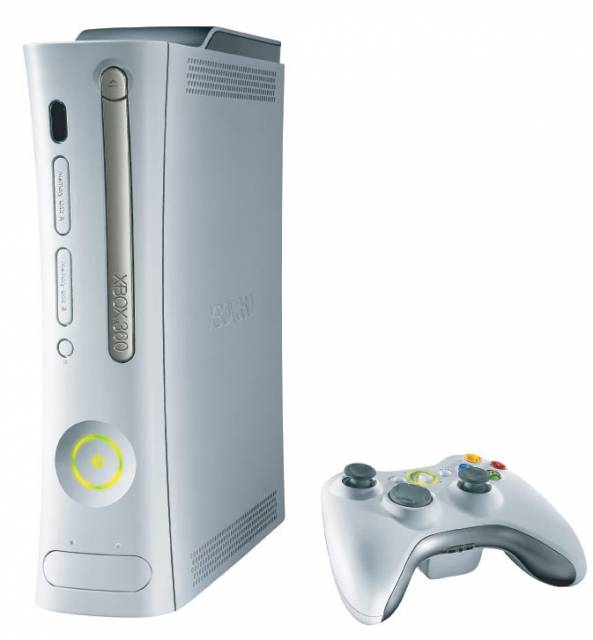After the revealing of the Xbox 360 Slim, I got pretty excited and began to dig out what little bits of information I could get my hands off the internet. During my research, I was intrigued about the motherboard revisions and stumbled upon interesting sources. My research led to me discovering interesting bits of these motherboards, and in relation to that, I figured they played a big role in the evolution of the 360 from a hardware's point of view (this means, we're excluding the New Xbox Experience and such, as they're software). I've written up information on each motherboard, and as a bonus I will try to explain why the Xbox 360's new motherboard, "Valhalla" will be much more reliable than previous models. I hope you'll find this writing interesting.
As you know, the Red Ring of Deaths was a big problem at the Xbox 360 launch. Actually, no, it wasn't a problem, it was a technical plague that took 30% of 360's down with it. Needless to say, it was a disaster. If you didn't know, these failure rates has been steadily declining ever since, though still continually haunts us, be it with fear or the actual three rings that bestow on your 360.
During these 5 years, Microsoft has taken subtle steps in addressing the RROD and other technical issues riddled on the console. Improvements were made, though no official announcements were made on these new additional motherboards (of course, that didn't stop us informed gamers and journalists from noticing). There have been 6 different motherboards across the 360's lifespan, each with its own unique codename. I will detail on each motherboard and its significances. The four you should look out for are: Xenon, Falcon, Jasper and Valhalla. The four are classified as "generations" for what big changes they bring to the table. Zephyr and Opus doesn't matter to us nearly as much as they're minor revisions.
| Codename | CPU | GPU | Power Supply | Release |
|---|---|---|---|---|
| Xenon (1st generation) | 90 nm | 90 nm | 203 watts | November 2005 |
| Zephyr | 90 nm | 90 nm | 203 watts | July 2007 |
| Falcon (2nd generation) | 65 nm | 80 nm | 175 watts | September 2007 |
| Opus | 65 nm | 90 nm | 175 watts | June 2008 |
| Jasper (3rd generation) | 65 nm | 65 nm | 150 watts | September 2008 |
| Valhalla (4th generation) | 45 nm | 45 nm | 135 watts | June 2010 |
Xenon: This is the launch motherboard that we're familiar with; bad press and abundance of technical errors. The GPU overheats too quickly and pops out of its socket when it overheats, the one that brings all the bad press on the console. If you bought a launch console, chances are that it has died on you at least once and that you had to bring it back in for repairs. Xenons are the old bastards of the console.
Zephyr: More or less the same as Xenon, this motherboard wasn't the cure for RROD. This minor revision was meant to bring in a HDMI socket, which means this was the default standard on all Xbox 360 Elites. It had epoxy glue to hold the GPU down better, prolonging the life of the console until it probably suffers the fate by RROD.
Falcon: A smaller CPU was installed on new consoles with the Falcon motherboard and the power supply was cropped off to 175 W. Problem is, its the GPU that's causing all of the heat issues. The smaller CPU made it more cheaper to manufacture on Microsoft's end, so there would be room for price reductions. It did little to combat the RROD. It is possible that since it and Zephyr prolongs the life of the console longer than Xenon, that RRODs still happen because gamers has the Zephyr/Falcon motherboards (which had some extra glue as a solution to the RROD). Xenon might be included in there as well, but I have a feeling that a majority of those have been replaced by now.
Opus: Every 360 with a Xenon in it that was sent in for repairs was refitted with a Opus, a Falcon version without the HDMI capability (Xenon was incompatible to being replaced by a Falcon). Simply done so money would be saved by manufacturing cheaper motherboards (and having a mountain of useless cases).
Jasper: After four freaking revisions, a smaller and cooler GPU was introduced and with it, a lower power supply demand. Its the first proper motherboard to address the RROD and combat it effectively. Before the Slim was announced, the Jasper motherboard was and is the Xbox 360 that you should be searching for, one that gamers recommended you look for. The reliability of this new GPU is far fetched compare to Xenon and reportedly failure rates has fallen dramatically since Jasper was introduced. And for a nice treat, its also quieter than Xenon.
Valhalla: Included in every Xbox 360 Slim; this should hopefully be mostly technical problems free. Valhalla carries everything that Jasper has enjoyed but with improvements made. The CPU and GPU was made smaller and combined as one chip. All three dies are combined as one package; making it much more easier to cool a console down when you look it at from a design point of view (you only need one fan and heatsink for the only major source of heat). The power supply has been reduced again and its advertised as "whisper quiet". Jasper/Valhalla is what the Xbox 360 should have always been like since launch: reliable enough that its acceptable for a electronic product.
You can check which revision you have with the following instructions:
In case if anyone is interested in knowing what motherboard I have (which is none), I have a Falcon. I was hoping that I had a Jasper since I bought my 360 in 2008, but the console was manufactured in 2007. So keep this in mind if you really want to know which motherboard you have, incase you are truly curious or do care like me. =PSo how do you know if the Xbox 360 you're about to buy is a Jasper model or not? Well, there's one blatantly-obvious method, and that's to open the box and check the manufacturing date on the back of the console itself, it's shown in YYYY-MM-DD format. It's believed that consoles manufactured on or after August 31st (2008-08-31) will feature the Jasper revision - though, this hasn't yet been confirmed. The later the console was manufactured after this date, the better the chance is that you may get a Jasper.
If that process seems like too much hard work, there could be another way, too. Flip the box over, and you should find a flap with a serial number located beneath it. The serial number will be in the format LNNNNNNYWWFF, where the Y is thought to represent the year of manufacture, and the WW is thought to represent the week - if the theory is to be believed. August 31st translates to week 35, so you'd be looking for a serial number somewhere along the lines of LNNNNNN'835'FF. This is by no means a foolproof option but it could be worthy of consideration when making a purchase.
With the new 360 Slim, Valhalla could be pivotal in finally making most of the technical plague as a thing of a past. Indeed, while Jasper did what it seems (to us) a fantastic job on dramatically lowering failure rates, there's always room for improvement. There's also nothing more like having more feeling of security and safety that your console won't die out on you.
This is probably going to end up too long, so I'll have to summarize everything in this paragraph, including a neat diagram, explaining why Valhalla will be better than every other motherboards. As explained earlier, a smaller GPU is a cooler GPU. Less power consumed means a cooler system (yet achieves the same results; hence better energy to heat efficiency). Overheating is the cause of RROD. If you have a smaller GPU that uses less energy and has a big fat heatsink and fan on it (plus a bunch of vents), it's a cooler system internally. And a cooler console is a happy console. A happy console is a console that doesn't die (as often), so that in turn makes us a happy and satisfied gamer (if you don't mind paying the price tag anyways).


Hope that was convincing to you as much as it is to me. Which motherboard do you have?
Sources:
Anandtech
Digitalspy (motherboard details)
Electronista (power graph)
Gamespot (failure rates)
Wikipedia (technical specs)

Log in to comment